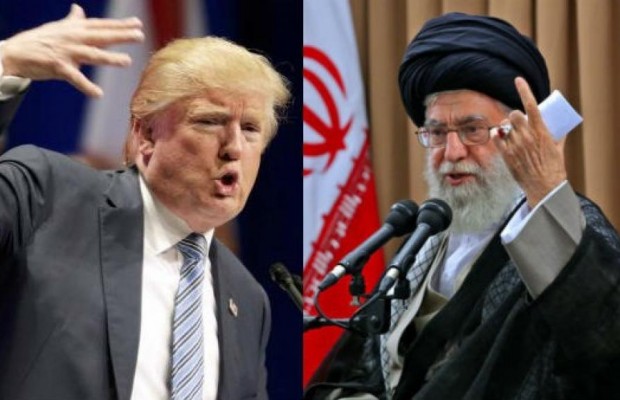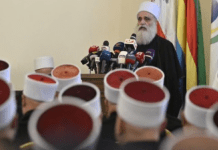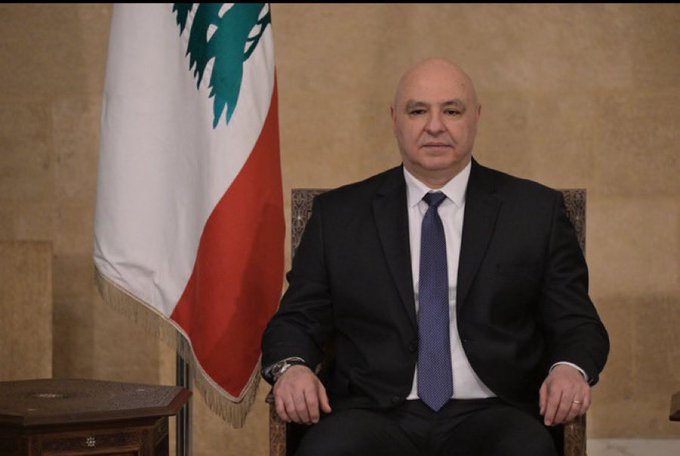Iran’s Limited Options against the US
Hanin Ghaddar/Al Arabiya English/January 31/2020
حنين غدار/خيارات إيران في مواجهة أميركا محدودة
Iran’s attack on two US military bases in Iraq last month were promoted as the beginning of a series of attacks that will eventually drive the US out of the Middle East. Iran and its regional proxies promised that those attacks were the first round.
However, almost a month later, the Iranian regime and its proxies seem to be still figuring out how to retaliate without risking a direct conflict with the US.
As we speak, there are probably a number of generals in Tehran thinking of the next steps, but one thing is clear: the Trump administration has drawn a very clear line in the sand by killing Qassem Soleimani, and this line will probably not be crossed again. In other words, an Iranian retaliation that would harm any American – citizen or official – could lead to a more damaging retaliation by the US.
So what can the Iranian regime do? The people in Iran, Iraq and Lebanon – who have been protesting against the Iranian regime and its toxic regional influence for months – did not really buy the rhetoric that Iran has caused the US serious damage by attacking the Iraqi military bases. To save face, Iran will have to do something. So what are its options?
Despite numerous statements from the highest-ranking leaders across the region – including Ali Khamenei and Hassan Nasrallah – indicating the darkest scenarios for the US and its troops in the region, the much anticipated attack did not result in any casualties, American or Iraqi. If anything, this is an indication that the Iranian regime is stumbling.
Iran’s retaliation was a weak and calculated one, accompanied with lots of bravado and victorious rhetoric. Iran – at the end of the day – has lost its most significant military commander and the architect of its influence in the region. That man will not be easily replaced.
The Iranian regime’s main concern will be replacing Soleimani, not as a man but as the glue that kept all his militias in the region organized and structured. That will require major effort. The regime will not be looking at just another commander to replace Soleimani, but at a new strategy to keep the structure from falling.
Lebanese Hezbollah might be given a bigger role in the region, and Hezbollah’s elite forces might have to be further stretched out to ensure their militias in the four countries – Lebanon, Syria, Iraq and Yemen, are well bonded and the central command structure does not falter.
Iran will also work to strengthen its anti-America rhetoric with the states it controls. The Iraqi and Lebanese governments will be pressured to adopt a more Iran-friendly attitude and decisions, and in contrast, a more aggressive rhetoric against the US.
But most significantly, Iran will move vehemently to consolidate its power within Lebanon and Iraq. Since a military retaliation is not an option, due to all the risks it entails, Iran will move to take over Iraq and put Lebanon deeper in its pockets.
Last week, Lebanon formed its new government – headed by PM Hassan Diab – but made-up of representative of Hezbollah’s allies in the political class.
For the first time in Lebanon’s history, Iran today controls the entirety of Lebanon’s government, which would give Hezbollah more access within state institutions.
In Iraq, Iran seems to be moving in the same direction as the choice of the next Prime Minister will determine how much Iran can access Iraq’s state institutions, knowing how significant Iraq is for both the Islamic Revolutionary Guard Corps and Hezbollah’s financial system.
Of course, these moves have already been challenged by the wide-ranging protests in Lebanon and Iraq, and that’s why Soleimani had been traveling between Beirut and Baghdad.
To advance its sway within Iraq and Lebanon, Iran might have to apply more violent methods against these protests. Many of these methods will backfire in terms of Iran losing more of its popular base among the Lebanese and Iraqi people, but mainly within the Shia constituencies in these two countries.
Today, the Iranian regime has realized two things: first, that they can no longer hide behind Arab Shia but will be directly targeted if they threaten the US via regional militias; and second, that the US’s deterrence in the region has dramatically increased and strengthened.
January 2020 must have been a very difficult month for the leaders of the Islamic revolution. Their muted retaliation most probably will not bring about further US military attacks on Iran and its proxies. However, it might increase the US policy of “maximum pressure” against the regime through sanctions and diplomacy.
In any case, one thing was clear to the regime when the news of Soleimani’s assassination reached them: that killing an American – a soldier, a citizen or a public servant — is a very hard red line that cannot be crossed without an unbearably heavy cost.
*Hanin Ghaddar is the inaugural Friedmann Visiting Fellow at The Washington Institute’s Geduld Program on Arab Politics, where she focuses on Shia politics throughout the Levant. She tweets @haningdr.
http://english.alarabiya.net/en/views/news/middle-east/2020/01/31/Iran-s-Limited-Options-against-the-US-.html






















